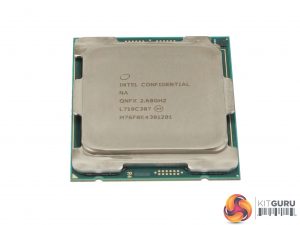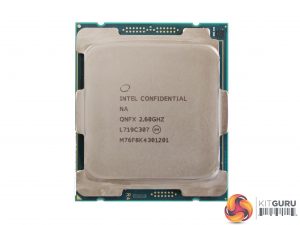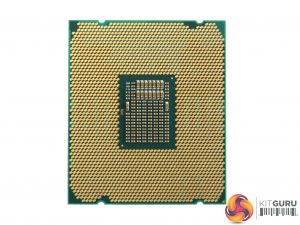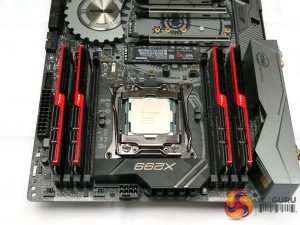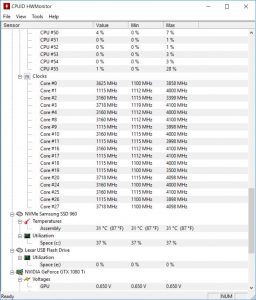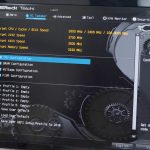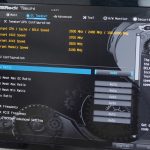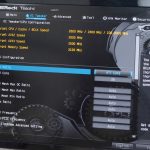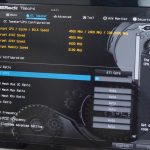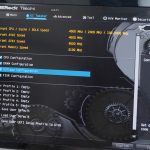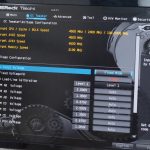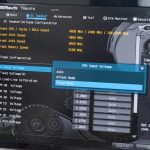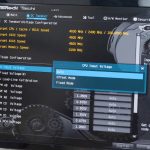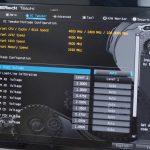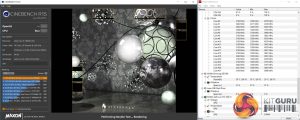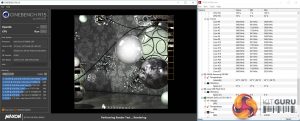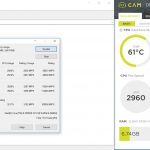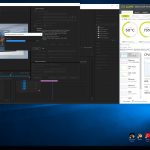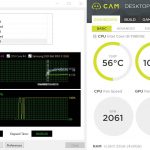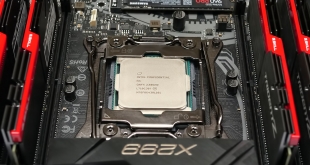
We’ve been waiting MONTHS since Intel told us they were going to launch a version of Core i9 with 18 hardware cores and 36 threads, and now the time has come for us to strap down this piece of Uber Silicon and thrash it within an inch of its life.
The fact of the matter is that KitGuru wasn’t especially impressed by the 10-core Core i9-7900X but you need to cut us some slack. At the time of that particular review we knew AMD was going to deliver Ryzen Threadripper in 12- and 16-core versions and that Intel was going to deliver Core i9 in 12-, 14-, 16- and 18-core versions.
This meant the 10-core Core i9-7900X was a mere hor d’oeuvres that happened to be as hot as a charcoal briquette with the panache and élan of a charging rhinoceros. It delivered the goods but it was hardly subtle.
Heading into this review we have to wonder how 18 cores can be anything other than hot, power-hungry and blazing fast. To be frank we were apprehensive and just the teeniest bit afraid. This could potentially be the worst CPU since Intel dabbled with a Pentium 4 running beyond 3GHz.
Before we received the Core i9-7980XE we knew pretty much the entire specification, with one significant exception. Running on the Basin Falls X299 chipset, the CPU was listed with a base clock speed of 2.6GHz and a maximum speed of 4.2GHz as well as an increased TDP of 165W. That figure is only 25W higher than the Core i9-7900X, which suggested that Intel was putting an emphasis on core count rather than clock speed.
Other parts of the specification such as support for DDR4-2666MHz memory and 44 lanes of PCI Express remained unchanged from the 10-core model, as did the cache-per-core at 1.375MB, which meant the total increased from 13.75MB to 24.75MB.
The figure that was missing was the all-core Turbo speed which turned out to be 3.4GHz, and we have to confess this was higher than we expected. Furthermore the maximum speed of 4.2GHz was revealed as the Turbo Boost 2.0 figure, which meant that with Turbo Boost 3.0 you could see two cores run as high as 4.4GHz, provided you had adequate cooling.
As we explain in our video this was our first taste of Intel HCC (High Core Count) silicon so we were in the world of the unknown. The Core i9-7900X uses LCC (Low Core Count which is arranged in a block of 3×4. Subtract two blocks for memory controllers and you have a maximum of ten cores.
HCC silicon uses a block of 4×5, again with two memory controllers, leaving up to 18 CPU cores, which is how we arrive at Core i9-7980XE. We can only speculate what Intel might achieve with XCC (Xtreme Core Count) which is 5×6 and allows up to 28 CPU cores as seen in some particularly expensive Xeons.
We chose a selection of CPUs to compare against Core i9-7980XE as follows:
- Ryzen Threadripper 1950X (16C32T)and 1920X (12C24T)
- Skylake-X i9-7900X (10C20T).
- Kaby Lake i7-7700K (4C8T).
- Ryzen 7 1800X (8C16T).
CPU Test System Common Components:
Graphics Card: Nvidia GeForce GTX 1080 Ti Founders Edition.
CPU Cooler: Corsair H110i GT & Thermaltake Floe Riing 360 for AMD Threadripper Socket TR4 CPUs.
Games SSD: SK hynix SE3010 SATA 6Gbps 960GB.
Power Supply: Seasonic Platinum 760W.
Operating System: Windows 10 Pro 64-bit (Creators Edition).
Intel 7980XE Test system for this review:
CPU: Intel Corei9-7980XE
Memory: 32GB G.Skill TridentX DDR4-3200MHz Quad Channel
Motherboard: ASRock X299 Tachi
CPU cooler: Fractal Design Celsius S24
Graphics: EVGA GTX 1080 Ti Founders Edition
Storage: Samsung 960 Pro
Power Supply: Sea Sonic Prime Titanium 1000W
OS: Windows 10 Pro
Ryzen Threadripper X399 System (Ryzen TR 1950X, Ryzen TR 1920X):
Ryzen TR 1950X CPU: AMD Ryzen Threadripper 1950X ‘Threadripper’ 16 cores, 32 threads (3.95GHz @ 1.3875V overclocked).
Ryzen TR 1920X CPU: AMD Ryzen Threadripper 1920X ‘Threadripper’ 12 cores, 24 threads (4.0GHz @ 1.3875V overclocked).
Motherboard: ASUS ROG Zenith Extreme (TR4, X399).
Memory: 32GB (4x8GB) G.Skill Trident Z 3200MHz 14-14-14-34 DDR4 @ 1.35V.
System Drive: Crucial MX300 525GB.
Skylake-X LGA 2066 System i9-7900X:
7900X CPU: Intel Core i9 7900X ‘Skylake-X’ (ES) 10 cores, 20 threads (4.6GHz @ 1.20V overclocked).
Motherboard: ASUS X299-Deluxe (LGA 2066, X299).
Memory: 16GB (2x8GB) or 32GB (4x8GB) G.Skill Trident Z 3200MHz 14-14-14-34 DDR4 @ 1.35V.
System Drive: Samsung 840 500GB.
Ryzen AM4 System Ryzen 7 1800X:
1800X CPU: AMD Ryzen 7 1800X ‘Summit Ridge’ 8 cores, 16 threads (4.05GHz @ 1.425V overclocked).
1700 CPU: AMD Ryzen 7 1700 ‘Summit Ridge’ 8 cores, 16 threads.
1600X CPU: AMD Ryzen 5 1600X ‘Summit Ridge’ 6 cores, 12 threads (4.0GHz @ 1.4125V overclocked).
Motherboard: Gigabyte Aorus AX370-Gaming 5 & ASUS Crosshair VI Hero (AM4, X370, AGESA 1006).
Memory: 16GB (2x8GB) G.Skill FlareX 3200MHz 14-14-14-34 DDR4 @ 1.35V.
System Drive: SanDisk Ultra Plus 256GB.
Kaby Lake LGA 1151 System i7-7700K:
7700K CPU: Intel Core i7-7700K ‘Kaby Lake’ (Retail) 4 cores, 8 threads (4.8GHz @ 1.35V overclocked).
Motherboard: ASUS Maximus VIII Hero (LGA 1151, Z170).
Memory: 16GB (2x8GB) G.Skill FlareX 3200MHz 14-14-14-34 DDR4 @ 1.35V.
System Drive: Micron M600 256GB.
We plugged together a test system on a flat test bench, fired up the Core i9-7980XE and watched Cinebench blast past in a shower of pixels. At stock clocks the Core i9 sat at a rock solid 3.4GHz on all 18 cores. Restricting Cinebench to run on ten threads appeared to show we had four cores at 3.66GHz and the remaining 14 at 3.2GHz which seemed somewhat peculiar (and unlikely).
Running Cinebench on two threads gave a maximum clock speed of 4.0GHz which was lower than the 4.4GHz we expected to see. When we ran Cinebench on a single thread the active core skipped around the die and we mostly saw the speed at 4.0GHz or 4.1GHz, although two cores made it all the way to 4.4GHz.
The moral of this tale is that you should not dwell too long on the claimed maximum clock speed because Turbo Boosts 2.0 and 3.0 are strange animals. Instead we suggest you focus on the all-core speed of 3.4GHz, then park that thought and instead closely study our overclocking results.
Overclocking
We have previously had Core i9-7900X running ten cores at 4.6GHz on 1.2V, so naturally we expected to achieve less with the 18-core i9-7980XE as it has very nearly double the cores in the same packaging. We started by adjusting the core voltage from Auto to Manual in the ASRock UEFI and found the system refused to POST.
The only safe adjustment was to enable XMP – everything else appeared to cause problems. Even changing from Auto to Manual 1.2V was enough to cause problems, which was bizarre. As you will see in our video we ended up leaving Core Voltage on Auto, raising Droop to Level 1 and simply cranked up the core multiplier.
Our starting point was 36x100MHz and we had no trouble raising the clock speed in stages to 4.6GHz. For more details on how exactly we did this – check out the video on the first page of this review today.
Here’s a list of clock speeds and resulting Core Voltage:
36x100MHz, 1.000VID
37x100MHz, 1.030VID
38x100MHz, 1.050VID
39x100MHz, 1.077VID
40x100MHz, 1.100VID
41x100MHz, 1.124VID
42x100MHz, 1.148VID
43x100MHz, 1.175VID
44x100MHz, 1.203VID
45x100MHz, 1.203VID
46x100MHz, 1.203VID
4.7GHz system froze
You can see the VID starts at 1.000V, increases to 1.203V at 4.4GHz and then remains at the same level. We will talk about power draw and temperatures later in this review.
At 4.6GHz all the cores appeared stable in the software we used with the notable exception of Adobe Premiere which caused the system to crash at 4.5GHz-4.6GHz and refused to open a Premiere Project at 4.3GHz-4.4GHz. Reducing the speed to 4.2GHz resulted in a system that ran Premiere perfectly.
We found a similar quirk with AMD Ryzen Threadripper where the 12-core 1920X would happily run at 4.0GHz while the 16-core 1950X had to be slowed to 3.8GHz to persuade Premiere to behave. There appears to be a combination of cores and clock speeds that upsets Premiere with these high core count CPUs.
Cinebench
Cinebench is an application which renders a photorealistic 3D scene to benchmark a computer’s rendering performance, on one CPU core, all CPU cores or using the GPU. We run the test using the all-core CPU and single-thread CPU modes.
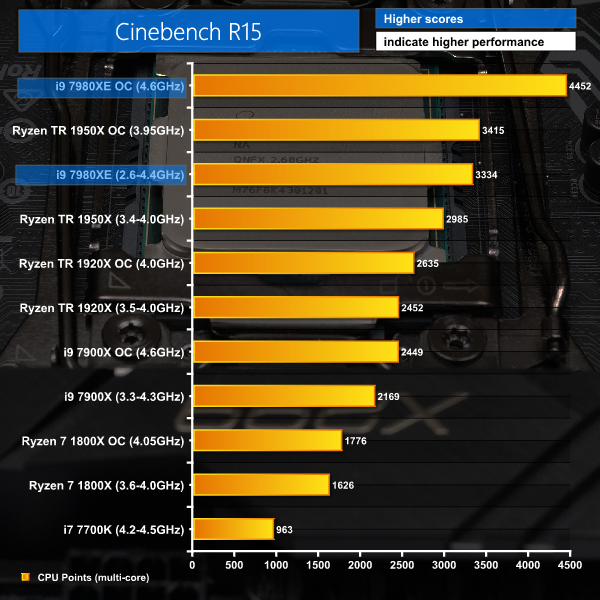
Cinebench R15 at stock clock speeds with varying numbers of cores enabled from 1 to 18.
Cinebench R15 with the Core i9 overclocked to 4.6GHz.
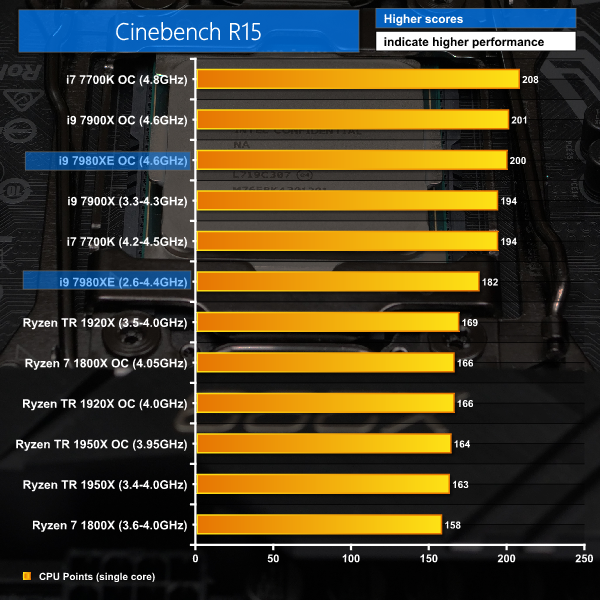
Handbrake Conversion
Handbrake is a free and open-source video transcoding tool that can be used to convert video files between different codecs, formats and resolutions. We measured the average frame rate achieved for a task of converting a 6.27GB 4K video using the Normal Profile setting and MP4 container. The test stresses all CPU cores to 100% and shows an affinity for memory bandwidth.
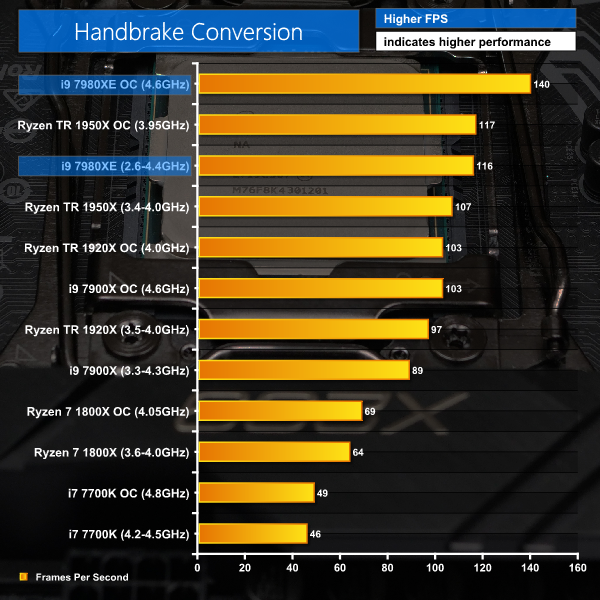
7-Zip
7-Zip is an open source Windows utility for manipulating archives. We measure the Total Rating performance using the built-in benchmark tool. The test stresses all CPU cores to 100% and shows an affinity for memory bandwidth.
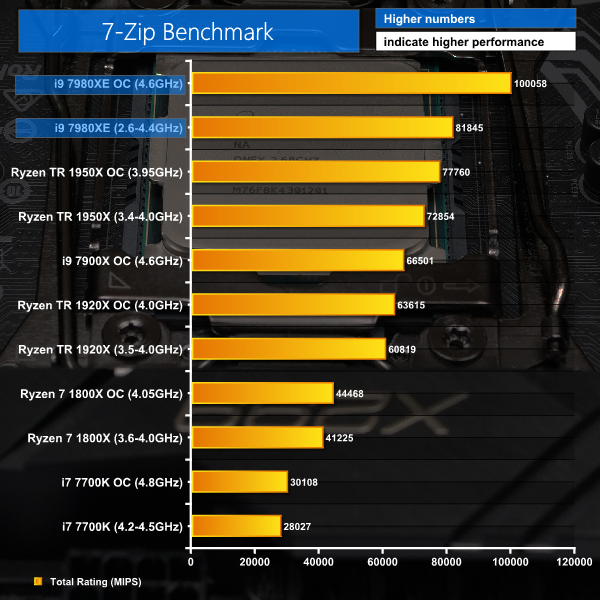
Sandra Memory Bandwidth
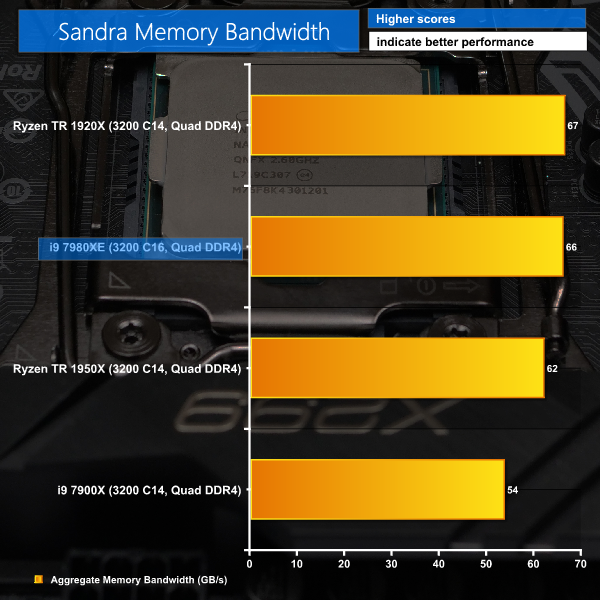
Overview:
The summary here is very straightforward as Core i9-7980XE is a monster performer. Provided your software is highly threaded and can use a good part of the 18 cores the new CPU is a winner at stock clocks. If you overclock the CPU it moves the goalposts clean out of sight. 18 cores beat the 16 cores of Threadripper at stock clocks but when you crank up the speed it makes the competition simply unfair.
If you look at performance per core in Cinebench single thread we can see Kaby Lake i7-7700K continues to hold the crown with its superior clock speed however the i9-7980XE kicks Threadripper all over the park.
3DMark
3DMark is a multi-platform hardware benchmark designed to test varying resolutions and detail levels of 3D gaming performance. We test using the Time Spy benchmark which gives an indication of DirectX 12 performance.
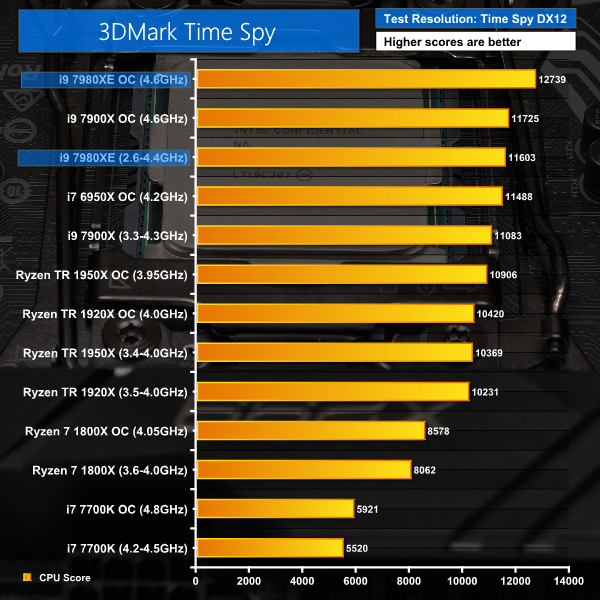
Metro: Last Light Redux
Despite its age, Metro: Last Light Redux remains a punishing title for modern computer hardware. We use the game’s built-in benchmark with quality set to Very High, SSAA enabled, AF 16X, and High tessellation.
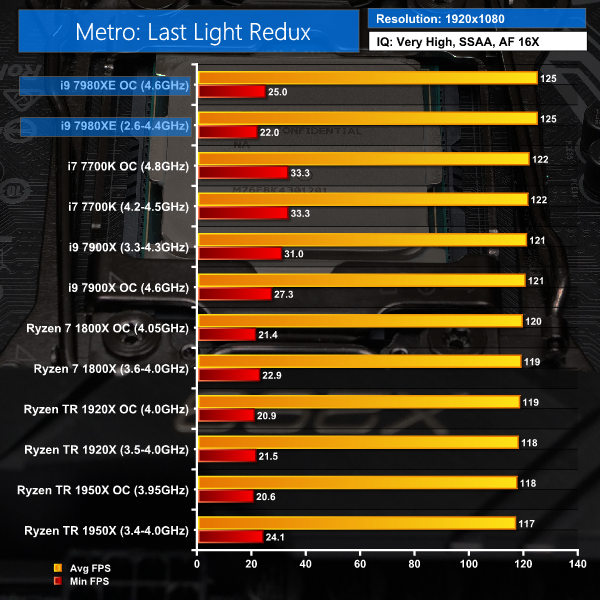
Ashes of the Singularity Escalation
Ashes of the Singularity Escalation is a Sci-Fi real-time strategy game built for the PC platform. The game includes a built-in benchmark tool with DirectX 12 support. We run the CPU-focused benchmark using DirectX 12 and the Extreme quality preset.
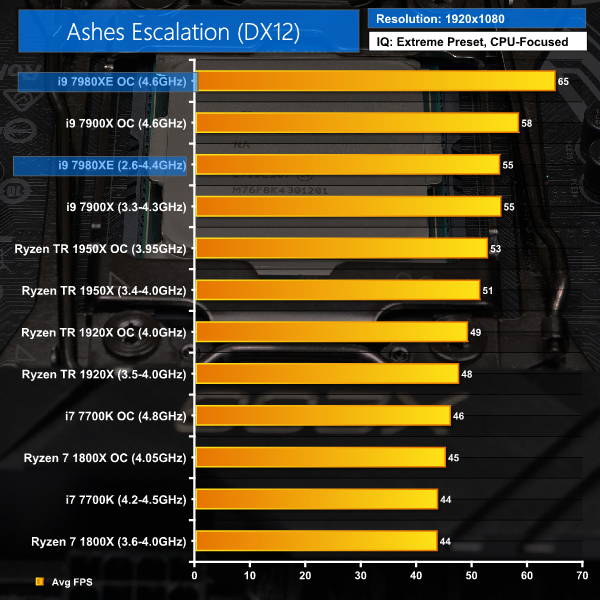
Ashes of the Singularity at Stock Clock speeds
Ashes of the Singularity at 4.6GHz
Gaming Performance Overview
In our gaming tests i9-7980XE is consistently found at the top the charts, although the margins are very small. For example in Metro: Last Light Redux the new CPU raises frame rates from 122fps for Core i7-7700K to 125fps, which is clearly trivial.
We have seen that Core i7-7700K or (heaven help us) Core i7-7740X are better for frame rates when a game puts the emphasis on clock speed over cores.
We also know that Ryzen 7-1800X delivers a good balance between performance, cores and clock speed and that Threadripper is more of a workstation CPU than a gaming chip. By contrast the new Core i9-7980XE can handle any job you throw in its direction.
Multimedia Testing
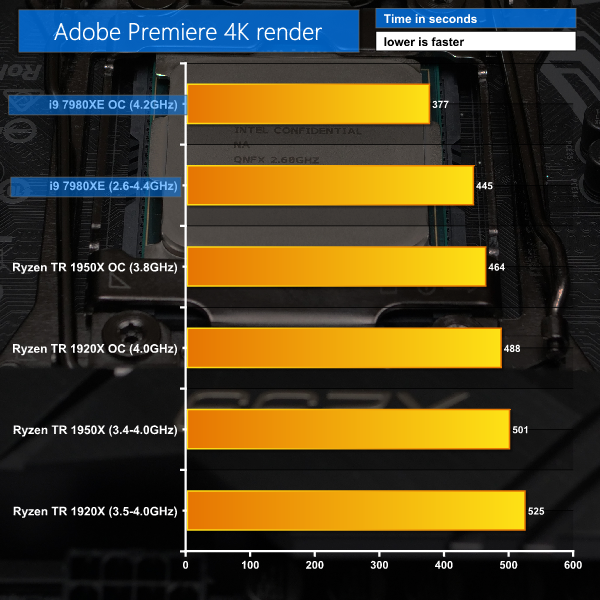
Core i9-7980XE running Premiere at Stock Clock speeds.
AMD Ryzen Threadripper 1950X running Premiere at Stock Clock speeds.
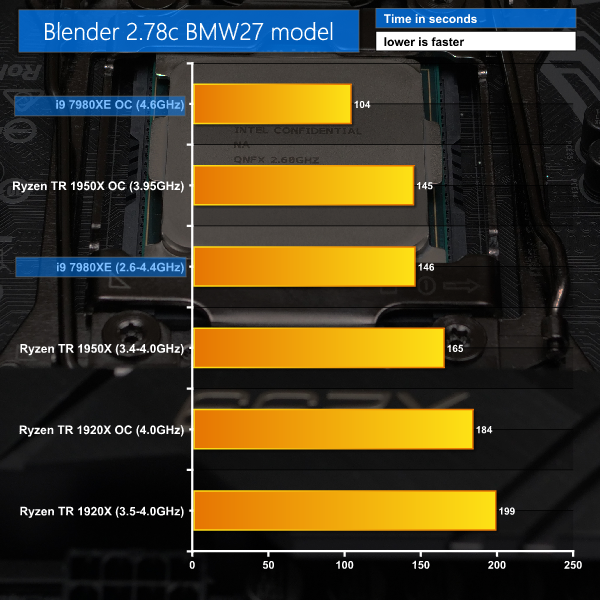
Core i9-7980XE running Blender at Stock Clock speeds.
Core i9-7980XE running Blender at 4.6GHz.
AMD Ryzen Threadripper 1950X running Blender at Stock Clock speeds.
AMD Ryzen Threadripper 1950X running Blender at 4.6GHz.
Power Consumption
We leave the system to idle on the Windows 10 desktop for 5 minutes before taking a power draw reading. For CPU load results, we read the power draw while producing five runs of the Cinebench multi-threaded test as we have found it often pushes power draw and temperature levels beyond those of AIDA 64 and close to Prime 95 (non-AVX) levels.
Even five continuous loops of Cinebench results in a short run time on high-performance CPUs which influences the validity of the temperature reading, so we run 5 minutes of AIDA64 stress test to validate data.
The power consumption of our entire test system (at the wall) is shown in the chart. The same test parameters were used for temperature readings.
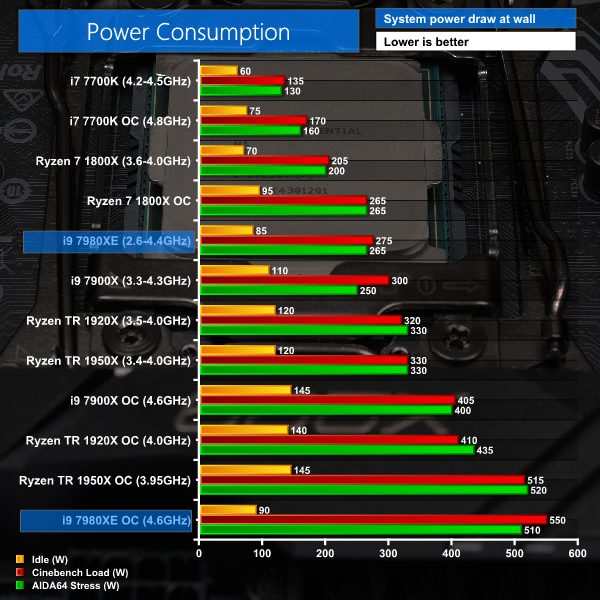
Here’s an update of the VID listing with the addition of power draw figures taken during Cinebench R15.
Default clocks, 1.005VID, 275W total
36x100MHz, 1.000VID, 310W total
37x100MHz, 1.030VID, 330W total
38x100MHz, 1.050VID, 350W total
39x100MHz, 1.077VID, 365W total
40x100MHz, 1.100VID, 390W total
41x100MHz, 1.124VID, 415W total
42x100MHz, 1.148VID, 450W total
43x100MHz, 1.175VID, 485W total
44x100MHz, 1.203VID, 525W total
45x100MHz, 1.203VID, 540W total
46x100MHz, 1.203VID, 550W total
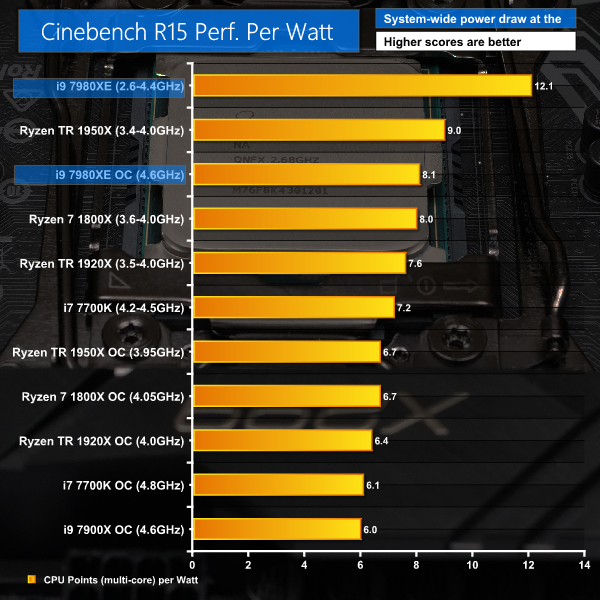
At stock clock speeds the Core i9-7980XE compares very favourably with the i9-7900X and also with both models of Threadripper. When the 18-core is overclocked the power draw increases dramatically, demanding 145W more than the i9-7900X and is in the same ballpark as the overclocked TR 1950X.
Our chart of Cinebench R15 performance per Watt clearly shows the Core i9-7980XE does a remarkably good job both at stock clock speeds and when overclocked to 4.6GHz.
Temperatures
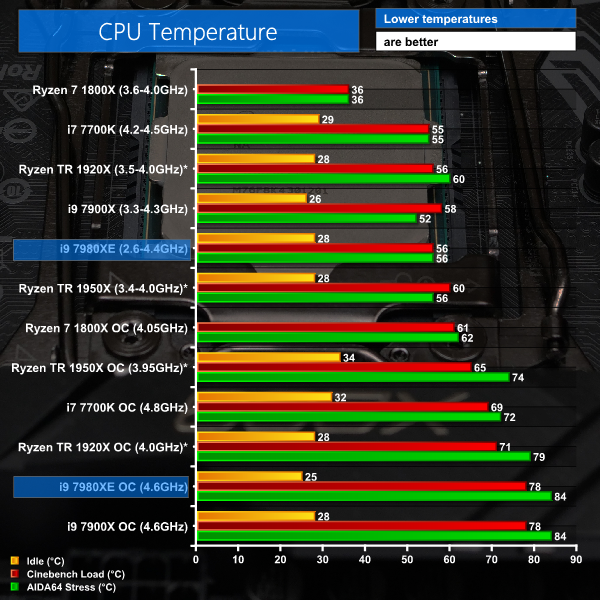
Temperatures at stock clock speeds.
Temperatures overclocked to 4.6GHz.
Here’s our final update to the overclocking table, this time with the addition of CPU temperatures.
Default clocks, 1.005VID, 275W total, 46 degrees
36x100MHz, 1.000VID, 310W total, 47 degrees
37x100MHz, 1.030VID, 330W total, 51 degrees
38x100MHz, 1.050VID, 350W total, 54 degrees
39x100MHz, 1.077VID, 365W total, 56 degrees
40x100MHz, 1.100VID, 390W total, 60 degrees
41x100MHz, 1.124VID, 415W total, 64 degrees
42x100MHz, 1.148VID, 450W total, 68 degrees
43x100MHz, 1.175VID, 485W total, 71 degrees
44x100MHz, 1.203VID, 525W total, 74 degrees
45x100MHz, 1.203VID, 540W total, 75 degrees
46x100MHz, 1.203VID, 550W total, 78 degrees
Overview
These figures are effectively identical to the Core i7-7900X which is simply remarkable as Core i9-7980XE has almost double the number of cores. Furthermore you may have noted in our video that we tested the Core i9-7980XE with a 240mm Fractal Design Celsius S24 All In One in Auto mode at stock clock speeds and simply clicked up the performance into PWM mode when we overclocked the CPU.
Previously we have used a 280mm AIO with the fan speed set to maximum which delivers a clear benefit but also makes the system horribly antisocial.
In recent times Intel has struggled to shift heat out of the CPU package so no matter what CPU cooling system you use the problem lies within the CPU, hence our decision to use a more civilised CPU cooler. Our test results suggest that Intel has updated the CPU package in some way however the rumour mill tells us that Intel has continued to use TIM inside Core i9 up to and including the 16-core model.
It would be perverse for Intel to have done something different with the Core i9-7980XE such as using liquid metal or solder so we shall return to this point when we have more information. We shall certainly test Core i9-7980XE with a selection of coolers and will have to think long and hard about delidding this US$1999 CPU to improve cooling.
If you consider that money is no object then the Intel Core i9-7980XE is currently the finest CPU in the world. On the other hand if you pay even the slightest attention to price then Core i9-7980XE is the most absurd CPU for the enthusiast user.
Gamers have no need to consider high core count CPUs and can currently be happy with the quad core Kaby Lake or the upcoming Coffee Lake.
Moving on to workstations and high end PCs for those fabled Mega Taskers, there is no denying the X299 platform has suffered criticism for poor cooling. Provided you build a decent PC and don’t go crazy with your overclocking X299 is relatively easy to work with. If we accept that X299 is a viable platform with a cost that is very similar to AMD X399 then it comes down to a choice of CPUs.
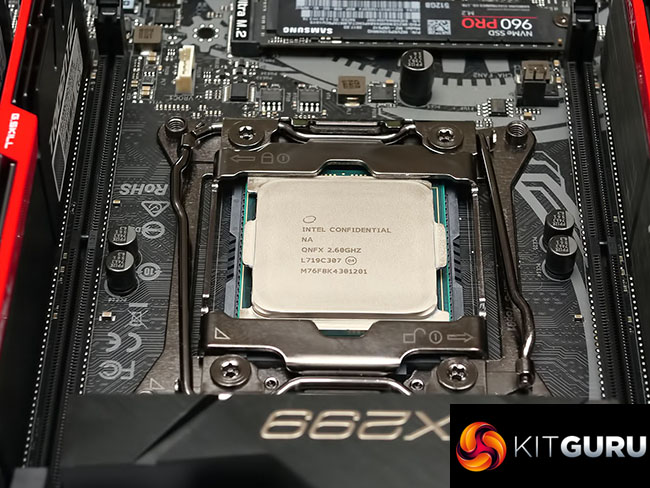
Ryzen Threadripper 1950X is impressive but also requires a substantial amount of power and top notch cooling. By contrast Core i9-7980XE is twice the price and delivers 30 percent more performance when overclocked. That sounds like terrible value for money however the picture is somewhat more confused than that.
You are likely to spend £3000-£4000 on a high end Threadripper PC so the same system powered by Core i9-7980XE would cost £4000-£5000, which is an extra 30 percent. In that context the price of the Core i9-7980XE is reasonable.
Clearly a CPU that costs around £1800 (or greater) is irrelevant to the vast majority of the market, but to those high end users who might be interested we have three closing thoughts.
- If you are an Intel aficionado with loads of money and you simply cannot tolerate the idea of switching to AMD, you need a Core i9-7980XE.
- Anyone who wants extreme levels of PCI Express for two or three GPUs plus a bunch of fast SSD storage – those 44 lanes are insufficient and it should be Threadripper all the way.
- If you simply want the fastest CPU on the market you will want a Core i9-7980XE.
Pros:
- Massive performance.
- At stock clocks this CPU is surprisingly power efficient.
- Simple to overclock.
- Internal cooling appears to have been improved in this model.
Cons:
- Only 44 lanes of PCI Express.
- Brutal power draw when you overclock to the maximum.
- Very, very expensive.
KitGuru says: The 18 cores inside i9-7980XE deliver storming performance.
Be sure to check out our sponsors store EKWB here
 KitGuru KitGuru.net – Tech News | Hardware News | Hardware Reviews | IOS | Mobile | Gaming | Graphics Cards
KitGuru KitGuru.net – Tech News | Hardware News | Hardware Reviews | IOS | Mobile | Gaming | Graphics Cards



